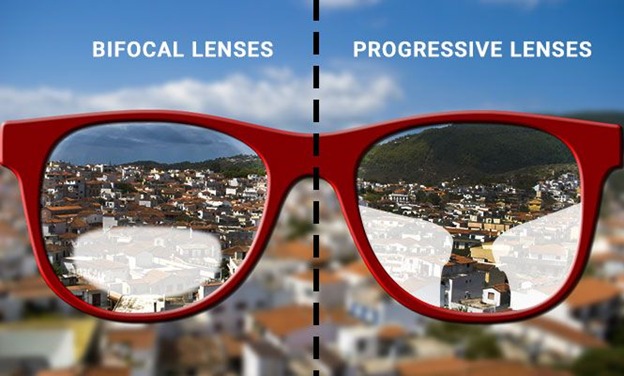The Pros and Cons of LASIK Surgery: Is it the Right Choice for You?
Laser-assisted in situ keratomileusis (LASIK) is a popular refractive eye surgery that has transformed the vision of millions worldwide. It offers a potential solution for those dependent on glasses or contact lenses. However, like any medical procedure, LASIK comes with its advantages and disadvantages. Understanding these factors is crucial in determining if LASIK is the right choice for you.
The Pros of LASIK Surgery
Quick and Painless Procedure :
LASIK surgery is typically a quick process, lasting about 15 to 30 minutes for both eyes. Patients often report minimal discomfort during the procedure, with many describing it as pressure rather than pain. Anesthetic eye drops are used to ensure a painless experience.
Rapid Recovery Time:
One of the most significant advantages of LASIK is the quick recovery. Many patients notice improved vision almost immediately after the procedure, with most returning to normal activities within a day or two. This is a stark contrast to traditional surgical methods, which often require longer recovery times.
Long-Lasting Results :
LASIK has a high success rate, with approximately 96% of patients achieving 20/25 vision or better. Once the cornea is reshaped, the results are generally permanent, making LASIK a long-term solution for refractive errors.
Reduced Dependence on Glasses or Contacts
For many, LASIK eliminates the need for corrective lenses. This freedom can enhance quality of life, allowing for easier participation in sports, outdoor activities, and daily tasks without the hassle of glasses or contacts.
Technological Advances:
LASIK technology has advanced significantly since its inception. Modern techniques, such as wavefront technology and femtosecond lasers, have improved precision and outcomes, reducing the risk of complications.
Customization Options
LASIK procedures can be tailored to individual needs. Surgeons can assess unique eye characteristics and customize the treatment accordingly, addressing specific vision issues like astigmatism or high prescriptions.
High Satisfaction Rates:
Studies indicate that a significant majority of LASIK patients report high satisfaction levels with their results. The ability to see clearly without the need for corrective lenses is often life-changing.
The Cons of LASIK Surgery
Potential Side Effects:
While many patients experience excellent outcomes, LASIK can lead to side effects such as dry eyes, glare, halos, or difficulty seeing at night. Although these issues often improve over time, some patients may experience long-term effects.
Not Suitable for Everyone:
LASIK is not appropriate for everyone. Individuals with certain conditions, such as severe dry eye, thin corneas, or certain eye diseases, may be unsuitable candidates. Additionally, those with rapidly changing prescriptions may need to wait until their vision stabilizes.
Cost Considerations
LASIK surgery can be expensive, often ranging from $2,000 to $3,000 per eye, depending on the surgeon and technology used. Many insurance plans do not cover the procedure, making it a significant out-of-pocket expense for many patients.
Risk of Complications:
As with any surgery, LASIK carries risks. Though rare, complications can include infection, under correction or overcorrection of vision, and vision loss. Patients should carefully consider these risks before proceeding.
Possible Need for Enhancement Surgery:
Some patients may require additional procedures to achieve the desired vision correction. This is particularly true for those with higher prescriptions or specific vision issues. Enhancement surgeries can involve additional costs and recovery time.
Changes Over Time:
While LASIK can correct vision at the time of the procedure, it does not prevent age-
related vision changes, such as presbyopia (difficulty focusing on near objects). Many
patients may still need reading glasses as they age.
Emotional and Psychological Factors:
The decision to undergo LASIK can involve emotional and psychological considerations. Some individuals may feel anxious about the surgery or may have unrealistic expectations regarding the results. It’s essential to have a realistic understanding of what LASIK can achieve.
Making the Decision: Is LASIK Right for You?
When considering LASIK surgery, it’s essential to weigh both the pros and cons carefully. Here are some key steps to guide your decision:
Consultation with an Eye Care Professional:
Schedule a comprehensive eye exam and consultation with a qualified eye surgeon. They can assess your eye health, discuss your vision goals, and determine if you’re a suitable candidate for LASIK.
Research and Understand the Procedure
Educate yourself about the LASIK process, including the technology used and potential risks. Understanding what to expect can help alleviate anxiety and prepare you for the experience.
Evaluate Your Lifestyle Needs:
Consider your lifestyle and how corrective surgery might impact it. If you lead an active lifestyle or find wearing glasses or contacts cumbersome, LASIK might be a worthwhile option.
Consider Financial Factors:
Evaluate the costs associated with LASIK and whether it fits within your budget. Some clinics offer financing options that can make the procedure more affordable.
Prepare for Recovery:
Be aware of the recovery process and follow your surgeon’s post-operative care instructions. Adequate preparation can lead to a smoother recovery and better outcomes.
In conclusion, LASIK surgery offers many benefits, including convenience, quick recovery, and the potential for improved vision. However, it also comes with risks and may not be suitable for everyone. By carefully considering the pros and cons and discussing your options with a qualified professional, you can make an informed decision about whether LASIK is the right choice for you.










